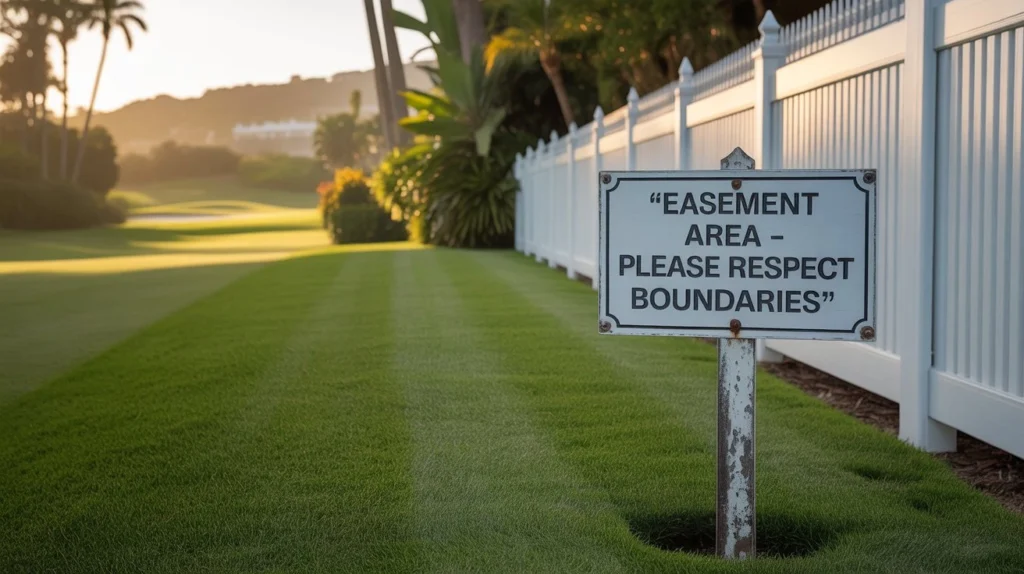The Montecito Country Club landscaping easement dispute has drawn attention from property owners, golf enthusiasts, and legal experts alike. At its core, the disagreement revolves around land use rights, the maintenance of scenic landscaping, and the balance between private property ownership and community aesthetics. Easement conflicts like this one are not merely about grass, trees, or hedges — they often strike at the heart of neighborhood harmony, real estate values, and legal interpretations of land rights.
Understanding this issue matters because easement disputes are more common than many realize, especially in upscale communities where landscaping contributes significantly to property values. The Montecito case serves as a lens to examine broader challenges involving easements, real estate law, and the responsibilities of homeowners’ associations and private clubs.
What Is a Landscaping Easement?
A landscaping easement is a legal right that allows one party to use another party’s land for specific purposes related to landscaping and aesthetics. Unlike general easements that may involve utility access, a landscaping easement is usually tied to visual appeal, environmental preservation, or maintaining neighborhood standards.
In communities like Montecito, such easements help ensure that private and club-owned lands blend seamlessly, preserving views, curb appeal, and the luxurious environment residents expect. However, these legal arrangements are only as effective as the clarity of their language and the cooperation of involved parties.
Why the Montecito Country Club Dispute Emerged
The Montecito Country Club dispute centers on disagreements about who controls landscaping changes and to what extent property owners or the club can alter existing greenery. Homeowners argue that changes impact their property views and neighborhood aesthetics, while the club may see landscaping flexibility as necessary for maintenance, upgrades, or event hosting.
When landscaping becomes a battleground, it reveals deeper tensions between private property rights and community interests. In this case, the luxurious nature of Montecito real estate makes every tree, hedge, or lawn alteration significant, both financially and socially.
The Role of Easements in High-End Communities
In affluent neighborhoods, landscaping easements are not just legal technicalities. They directly affect property values, prestige, and homeowner satisfaction. By enforcing uniform landscaping standards, easements create the polished, high-value look that residents pay for.
Yet, disputes like the Montecito Country Club case show how interpretations of easement agreements can diverge. A small disagreement over trimming a hedge may escalate into a full legal conflict because the stakes involve more than plants — they touch on trust, investment, and community reputation.
Benefits of Landscaping Easements
Landscaping easements are designed to provide stability and predictability in how land is maintained. They ensure scenic beauty, protect sightlines, and prevent one property owner from making changes that negatively affect others.
For country clubs, easements protect the visual character of golf courses, fairways, and surrounding homes. For homeowners, they safeguard investments by preventing neighboring land alterations that could reduce value. Essentially, easements build a protective shield around shared community interests.
Challenges of Enforcing Easements
While easements sound beneficial on paper, their enforcement is often complicated. Ambiguous wording in easement agreements can lead to different interpretations. In the Montecito dispute, the challenge lies in determining whether landscaping changes enhance or harm the community’s intended character.
Legal enforcement can also be costly, as disputes often end up in court. This adds tension, drains resources, and strains relationships between neighbors or between homeowners and clubs. Beyond money, there is also the cost of fractured community trust.
Real-World Impacts of the Montecito Dispute
The Montecito case has practical consequences for all involved. Homeowners worry about obstructed views and diminished property appeal, while the country club must balance members’ expectations with maintenance needs.
Local communities also watch closely, as the outcome could set precedents for how similar disputes are handled. If one side gains too much control, future agreements may tilt unfairly, upsetting the delicate balance between property rights and collective good.
Legal Interpretations of Landscaping Easements
Courts play a vital role in resolving easement disputes. Judges typically interpret the original intent of the easement agreement and weigh the impact of changes on both parties. In many cases, courts favor the preservation of community aesthetics, particularly when property values are at stake.
However, each case is unique. In Montecito, the court’s decision will likely depend on the exact wording of the easement documents, historic usage patterns, and whether changes to the landscaping can be considered reasonable or excessive.
Homeowners’ Perspective in Montecito
For Montecito residents, the dispute is about more than just shrubs or fairway edges. It is about protecting the tranquil, scenic environment they invested in. They expect that the country club, as a neighbor, will honor the community’s established standards and traditions.
Many homeowners view the easement as a guarantee that their expensive properties will not lose value due to unilateral changes made by the club. This explains why emotions run high, as landscaping is tied directly to lifestyle, identity, and financial security.
Country Club’s Perspective in Montecito
From the club’s side, landscaping is not only an aesthetic choice but also a matter of functionality and sustainability. The golf course requires regular maintenance, water management, and design improvements to remain attractive to members and competitive in the hospitality market.
The club may feel that easement restrictions are too rigid, preventing it from adapting to new landscaping technologies, drought-resistant plants, or design enhancements that align with modern golf course standards. Thus, the dispute becomes a clash between tradition and adaptation.
How Easement Disputes Are Resolved
Resolving an easement dispute like Montecito’s usually involves several stages. First, parties attempt negotiation, sometimes with mediators. If that fails, legal arbitration or court litigation follows. Courts may enforce the strict wording of the easement or interpret it flexibly to balance interests.
Long-term solutions often include revising easement agreements, introducing clearer rules, or establishing committees that oversee landscaping changes. In upscale communities, compromise is often better than costly litigation that divides neighbors.
Preventing Future Landscaping Easement Disputes
The Montecito case highlights the importance of clear contracts. To avoid future disputes, easement agreements should include detailed landscaping guidelines, timelines for maintenance, and dispute resolution procedures.
Homeowners and country clubs alike should engage in open dialogue before conflicts escalate. Transparency, respect, and proactive planning go a long way in preserving community harmony.
Lessons from the Montecito Dispute
The Montecito landscaping easement conflict offers valuable lessons for other communities. It shows the need for balance between private rights and collective aesthetics, the role of clear legal language, and the importance of cooperation over confrontation.
Communities that value harmony must see easements not as rigid boundaries but as frameworks for cooperation. By respecting each other’s perspectives, clubs and homeowners can ensure mutual benefits and avoid costly battles.
Also read : How to Identify and Treat Red Threading in Lawns
FAQs
What is the Montecito Country Club landscaping easement dispute about?
It is a conflict between the club and homeowners over control and maintenance of landscaping that affects views, aesthetics, and property values.
Why are landscaping easements important?
They protect neighborhood beauty, preserve property values, and prevent unilateral changes that could harm community appeal.
Who decides landscaping easement disputes?
If negotiation fails, courts interpret easement documents and decide whether changes align with the original intent.
Can easement disputes be avoided?
Yes, with clear contracts, open communication, and defined landscaping guidelines that balance all parties’ needs.
What impact does the dispute have on homeowners?
It affects property values, visual enjoyment, and overall trust in community governance.
What is the best resolution for landscaping easement conflicts?
Compromise through mediation or revised agreements is usually more effective than prolonged legal battles.
Conclusion
The Montecito Country Club landscaping easement dispute is more than a local disagreement; it is a case study in how affluent communities navigate the delicate balance between private property rights and shared community aesthetics. It underscores the need for clarity, cooperation, and fairness in easement agreements.
For homeowners, it is about protecting investments. For the club, it is about flexibility and long-term sustainability. The best path forward lies not in bitter litigation but in collaboration, compromise, and mutual respect.
If you are a property owner or part of a community association, now is the time to review your easement agreements. Clear communication today prevents disputes tomorrow.






